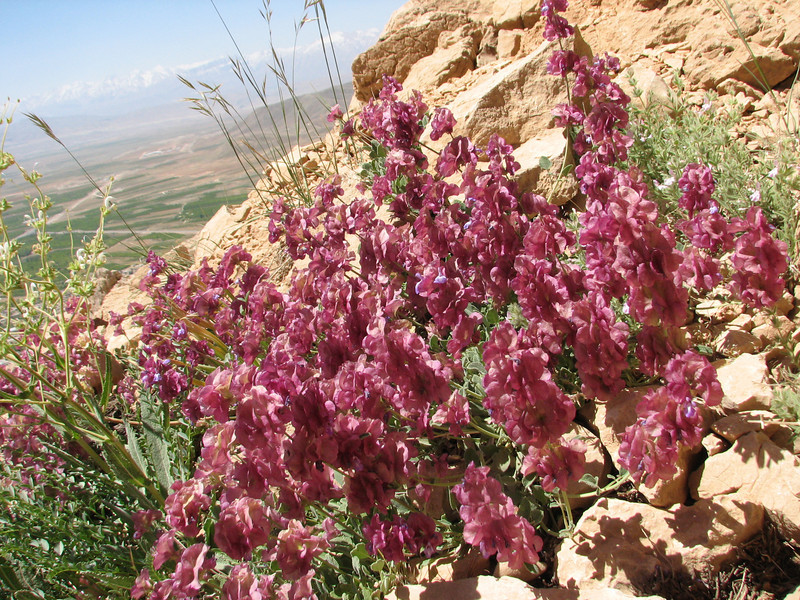Mexican sage
(Salvia hydrangea)

Description
Salvia hydrangea, commonly known as Hydrangea Sage or Mexican Sage, is a member of the Lamiaceae family and is native to Mexico and Guatemala. This perennial shrub is valued for its ornamental value and medicinal properties, making it a popular choice for gardeners and herbalists alike. Description Salvia hydrangea can grow up to 5 feet tall and wide, with a sprawling, woody habit. The leaves are dark green and leathery, with a slightly fuzzy texture, and are arranged in opposite pairs along the stems. The plant produces spikes of small, tubular, lavender-blue flowers from late summer through fall, which attract bees and hummingbirds. Habitat and Range Salvia hydrangea is native to Mexico and Guatemala, where it grows in a variety of habitats, including dry forests, savannas, and rocky slopes. It is typically found at elevations between 500 and 2,000 meters above sea level. Within its native range, Salvia hydrangea can be found in the states of Chiapas, Guerrero, Hidalgo, Jalisco, Mexico, Michoacán, Morelos, Oaxaca, Puebla, Querétaro, San Luis Potosí, Tamaulipas, Veracruz, and Zacatecas in Mexico, as well as in Guatemala. Outside of its native range, Salvia hydrangea is also grown as an ornamental plant in gardens and landscapes in other parts of the world, including the United States, Europe, and Asia. However, it is not considered invasive and does not pose a threat to native ecosystems in these regions. Salvia hydrangea is a hardy plant that can tolerate a wide range of growing conditions. It prefers well-draining soil that is rich in organic matter, but can also thrive in poor soil. It is tolerant of drought and can be grown in full sun to partial shade. In colder climates, it may die back to the ground in winter, but will resprout in spring. Propagation Salvia hydrangea can be propagated by seed or cuttings. Propagation by seed: The seeds of Salvia hydrangea can be sown directly in the garden bed in late winter or early spring, or they can be started indoors 6-8 weeks before the last frost date. The seeds should be planted in a well-draining soil mix, covered with a thin layer of soil, and kept moist. Germination usually takes 7-14 days. Once the seedlings have grown to a size where they can be handled, they can be transplanted into individual pots or into the garden bed. Propagation by cuttings: Salvia hydrangea can also be propagated by taking cuttings in late summer or early fall. Cuttings should be 4-6 inches long and taken from healthy, mature plants. The lower leaves should be removed and the cutting should be dipped in rooting hormone to encourage root growth. The cutting should then be planted in a pot filled with moist potting soil, and kept in a warm, humid location until roots develop. Once the cutting has established roots, it can be transplanted into a larger pot or into the garden bed. Propagation by division: Salvia hydrangea can also be propagated by division. This involves dividing the plant into smaller sections and replanting them. This method is best done in the spring when the plant is actively growing. Carefully dig up the plant, separate the sections, and replant them in a well-draining soil mix. Water the newly planted sections thoroughly and keep them moist until they become established. Uses Salvia hydrangea has several uses, including: Ornamental: Salvia hydrangea is a popular ornamental plant due to its showy spikes of lavender-blue flowers, which bloom from late summer through fall. It is often grown as a specimen plant or in mixed borders, and can be used in both formal and informal garden settings. Its attractive foliage and long bloom time make it a valuable addition to any garden. Medicinal: Salvia hydrangea has a long history of use in traditional medicine, particularly in Mexico and Central America. It is believed to have antibacterial, antifungal, and anti-inflammatory properties, and is used to treat a variety of ailments, including respiratory infections, digestive issues, and skin conditions. However, more research is needed to fully understand the plant's medicinal properties and potential side effects. Wildlife habitat: Salvia hydrangea is attractive to pollinators, including bees and hummingbirds, and can help support local wildlife populations. By planting Salvia hydrangea in your garden, you can provide a valuable food source for pollinators and help create a more biodiverse environment. Culinary: Salvia hydrangea leaves can be used to flavor food, particularly in Mexican cuisine. The leaves have a slightly bitter, minty flavor and can be used to season meats, soups, and stews. Aromatic: Salvia hydrangea leaves have a pleasant, minty aroma, and can be used in potpourri or to make scented sachets. Cultivars Several cultivars of Salvia hydrangea are available, each with slightly different characteristics. 'Blue Enigma' has larger, more showy flowers than the species, while 'Pink Delicious' has pink flowers instead of the usual lavender-blue. 'White Swan' has white flowers, and 'Lavender Lace' has variegated leaves. In conclusion, Salvia hydrangea is a versatile and attractive plant with both ornamental and medicinal value. Its easy cultivation and hardy nature make it an excellent choice for gardeners looking for a low-maintenance yet showy addition to their landscape. Conservation Status The conservation status of Salvia hydrangea is not currently assessed by the International Union for Conservation of Nature (IUCN). However, like many plants, it may face threats from habitat loss, overexploitation, and other factors related to human activities. Additionally, as a popular ornamental plant, there is potential for the plant to be over-collected from the wild, which could negatively impact wild populations. Therefore, it is important to ensure that the plant is sustainably harvested and cultivated, and that wild populations are protected through conservation efforts. Additionally, the cultivation of Salvia hydrangea in gardens and landscapes can help reduce pressure on wild populations and support the conservation of the species.
Taxonomic tree:







